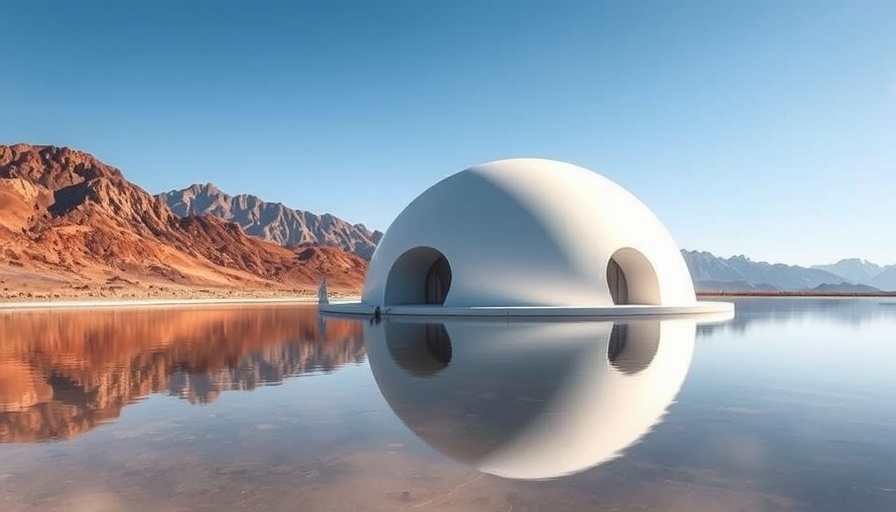
Exploring the Rejuvenation of Domed Architecture
Recently, architecture has embraced a resurgence of domed structures, bringing a classic form back into contemporary design. These buildings are captivating not only for their aesthetics but also for their potential to enhance remote workspaces. For digital nomads seeking comfort and efficiency in their work environments, the domed structure offers intriguing possibilities.
Engaging Workspaces: A Dome's Unique Advantage
Curved walls and expansive ceilings allow for increased natural light, creating an uplifting atmosphere that minimizes stress and enhances productivity. The round shape can foster a sense of community and collaboration, essential for digital nomads who often operate in isolation.
An Inspiration from Nature: Biomimicry in Design
Many modern domes draw inspiration from natural forms, utilizing materials and designs that resemble environmental elements. This approach not only enhances aesthetic appeal but also contributes to sustainability. Some of the latest dome-based designs focus on passive heating and cooling systems, which keep energy consumption low while creating a comfortable workspace.
Counterarguments: Are Domed Workspaces Practical?
Despite the visual and ergonomic advantages, potential downsides exist. The curved structure can make traditional furniture layouts challenging. Digital nomads are encouraged to think creatively about their workspace arrangements. Utilizing modular furniture or adaptable workspace solutions can maximize the usability of a dome while maintaining comfort.
Famous Domed Workspaces to Explore
Across the globe, several recently constructed dome buildings serve as excellent examples of this architectural revival. For instance, the Geodesic Dome in California serves dual purposes: a community gathering space and an innovative workspace for freelancers. Similar projects are springing up in urban and rural settings, encouraging remote workers to embrace unique environments conducive to productivity.
Tips for Adopting a Dome-Inspired Workspace
To design a dome-inspired workspace, consider the following tips:
- Integrate natural lighting through large windows to enhance mood and focus.
- Use soft furnishings and colors that reflect nature to create a calming atmosphere.
- Incorporate flexible furniture that can be easily rearranged to suit varying tasks.
By adopting these principles, digital nomads can transform their work environments into inspiring spaces.
The Future of Workspaces: Why Domes Matter
The revival of dome architecture reflects broader trends in workplace design that prioritize health and well-being. As we shift towards more flexible work arrangements, the lessons learned from this architectural style can guide us in shaping workspaces that not only fulfill functional needs but also promote overall wellness. The emotional connections fostered by open spaces can contribute to better engagement, not just in professional environments but in residential spaces as well.
Call to Action
Consider exploring towards domed architecture for your next workspace design. The charm and functionality of dome-inspired spaces may bring a fresh, invigorating approach to your work. What will your next workspace look like?
 Add Row
Add Row  Add
Add 




Write A Comment